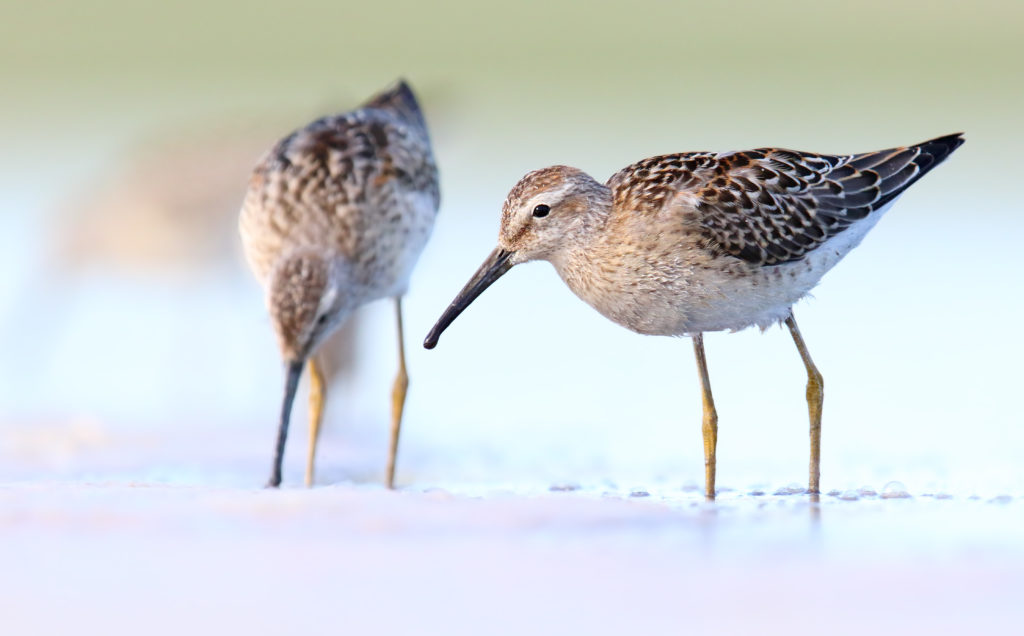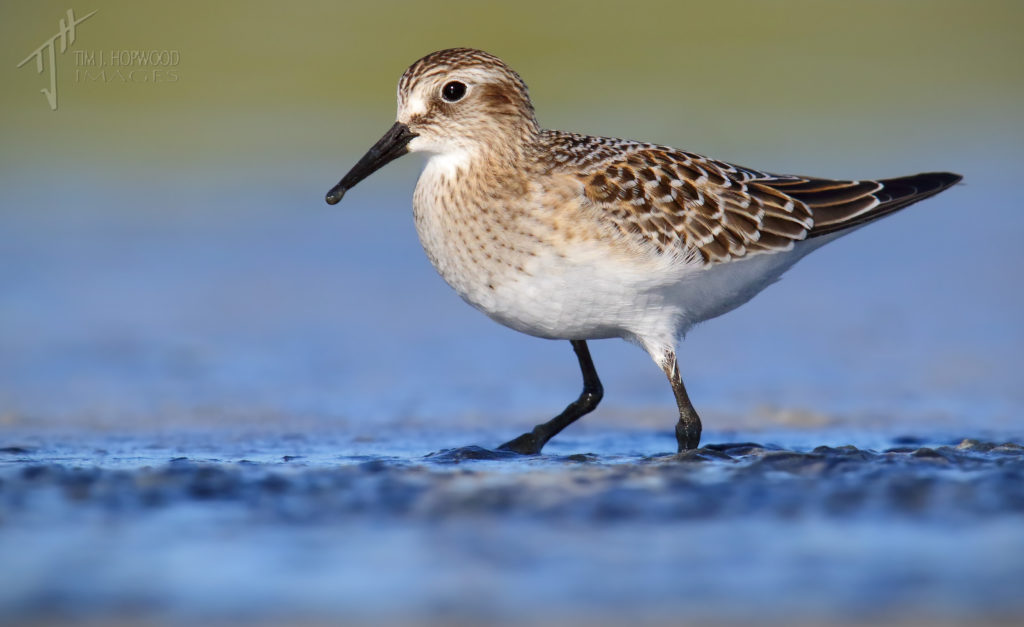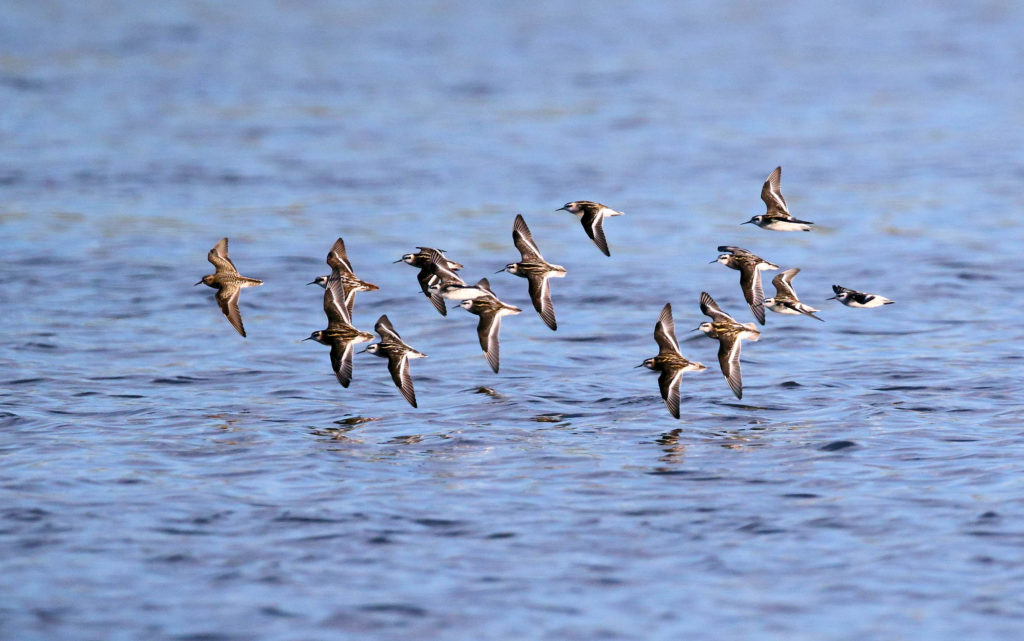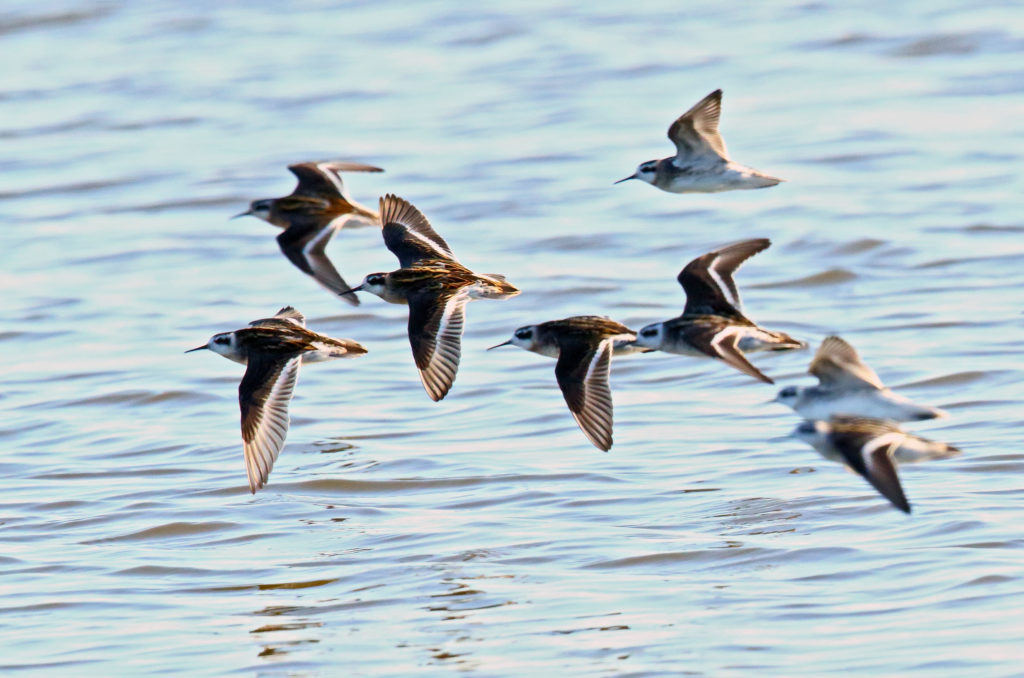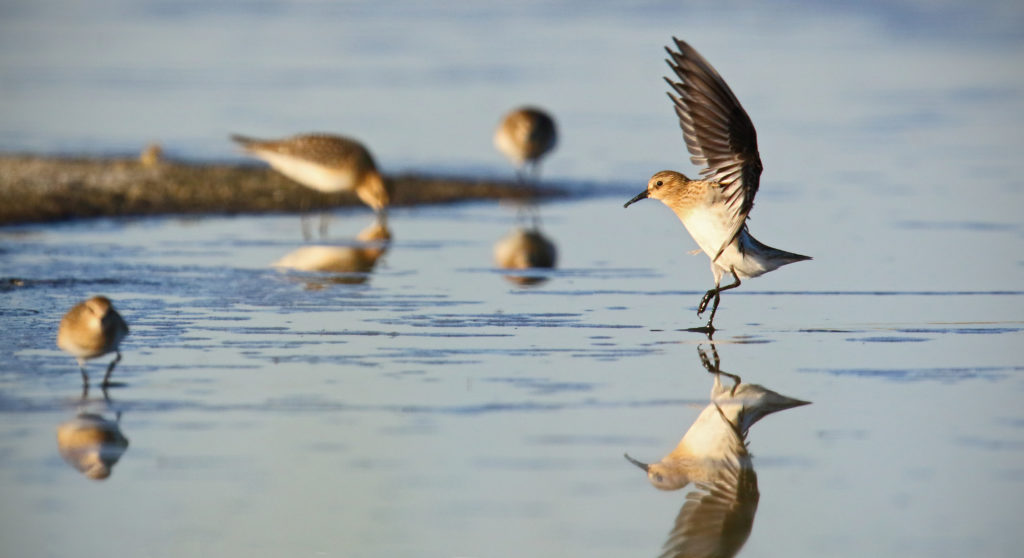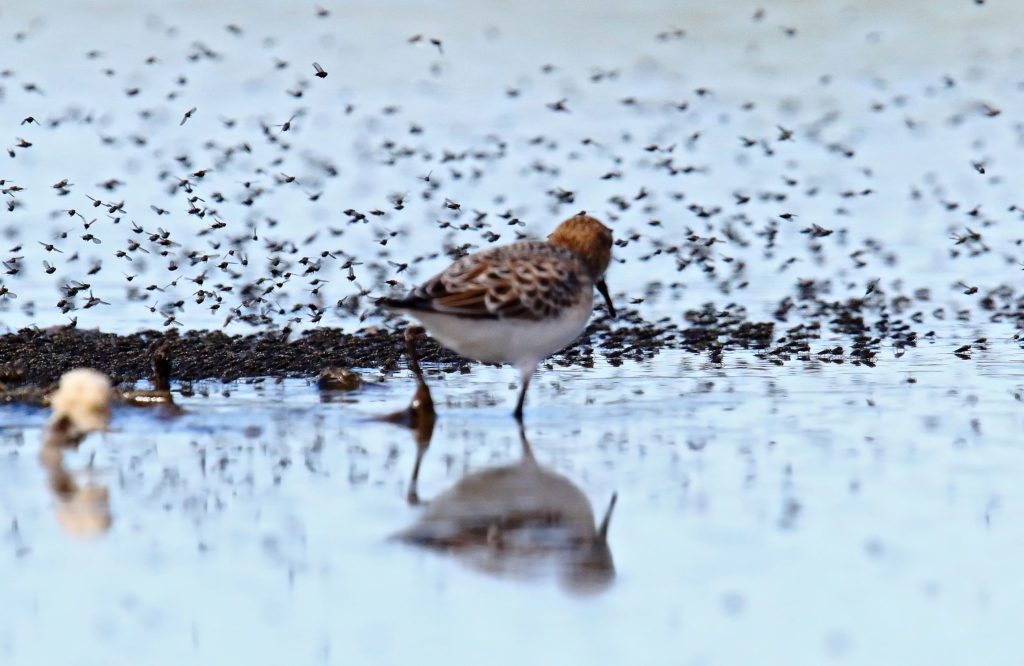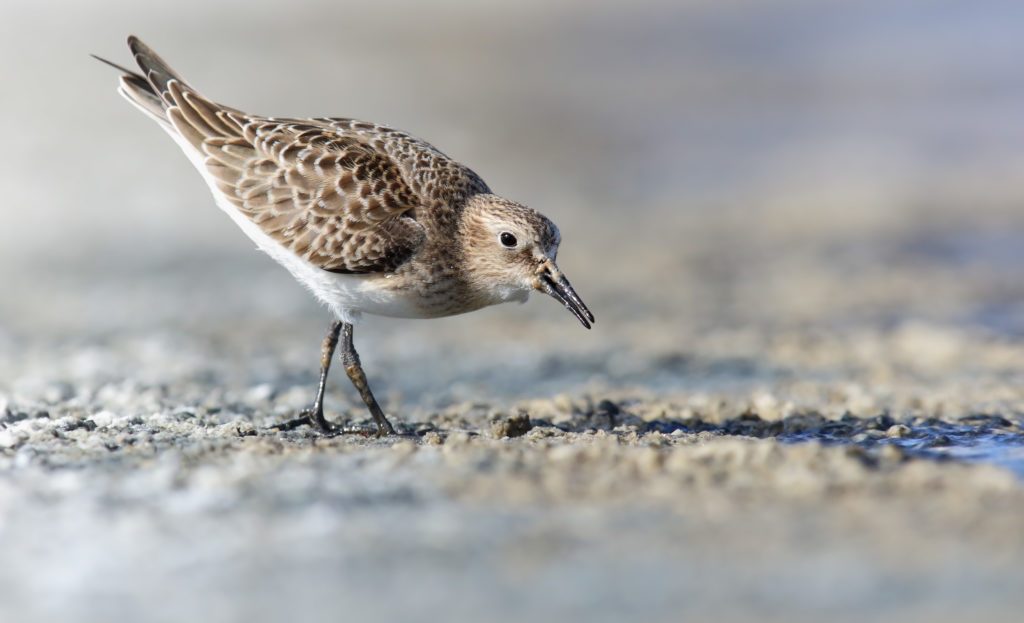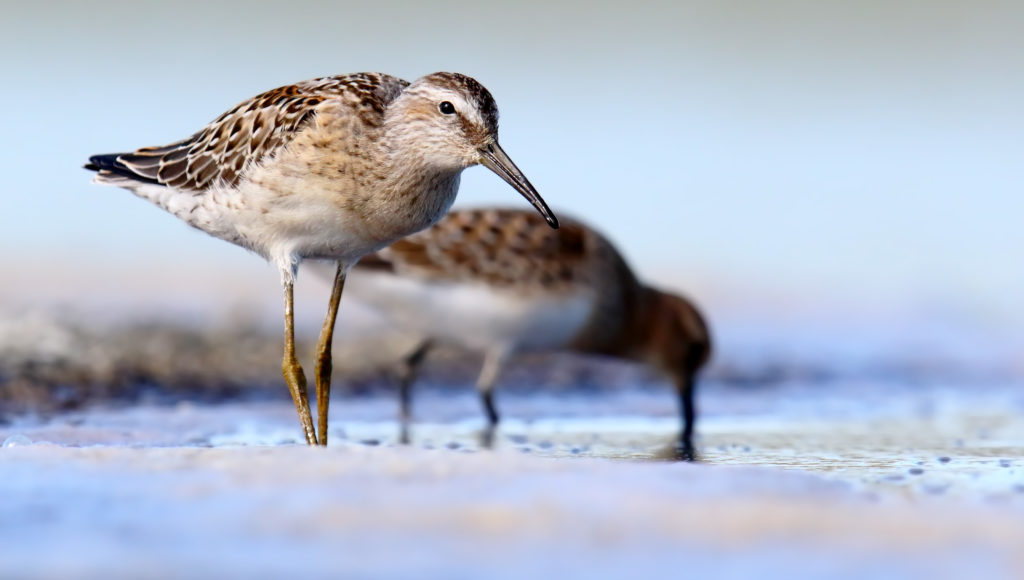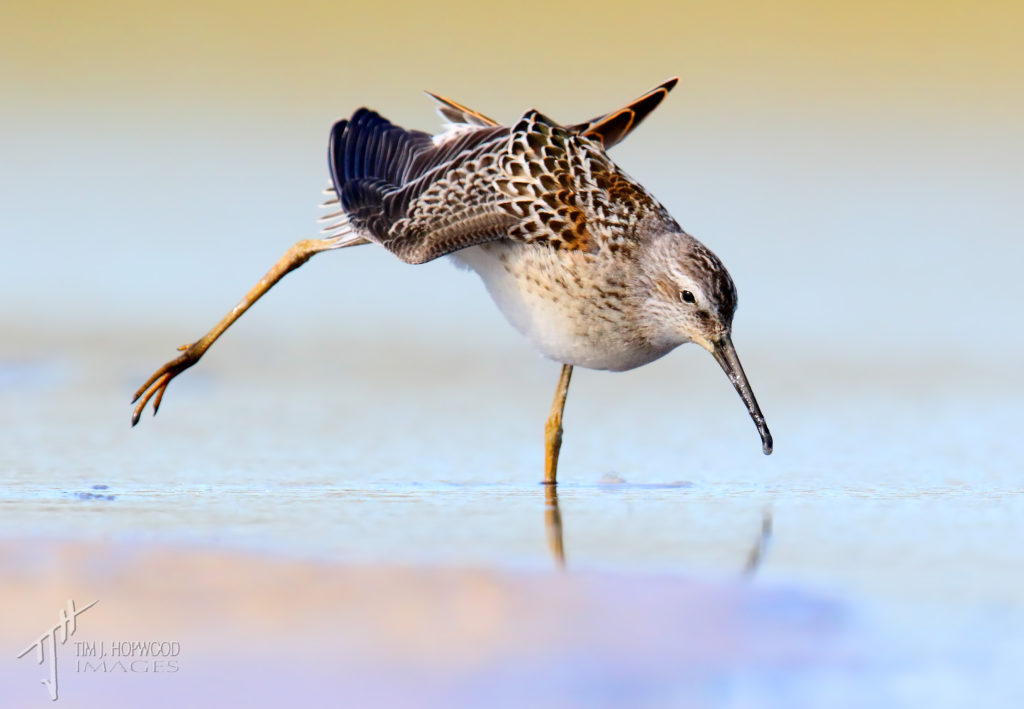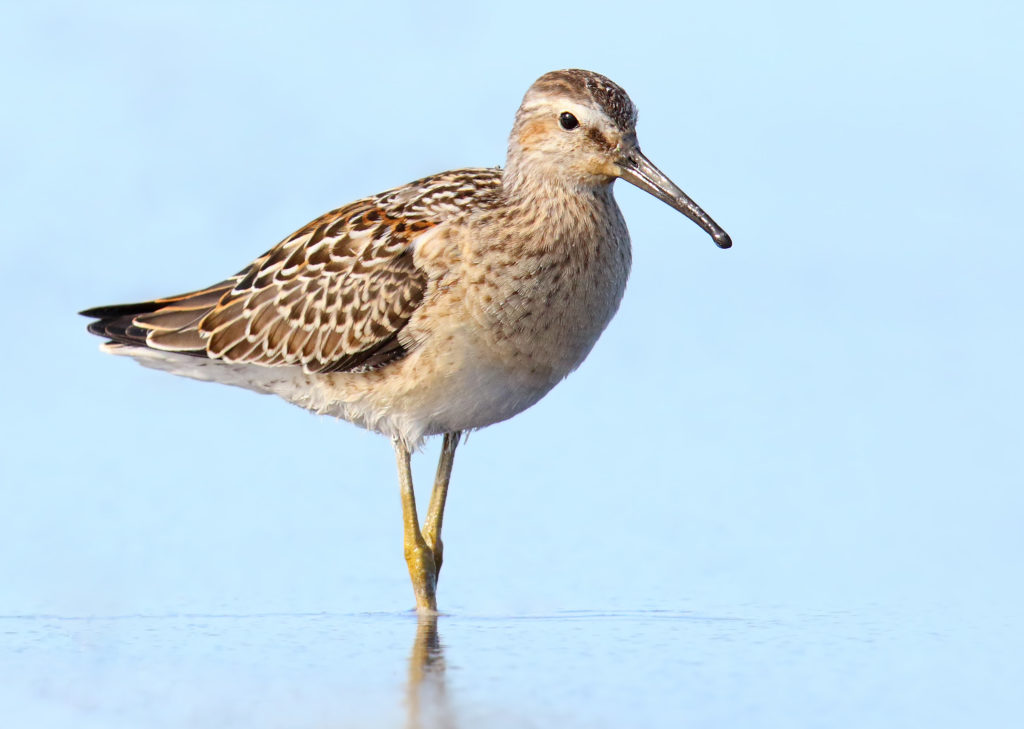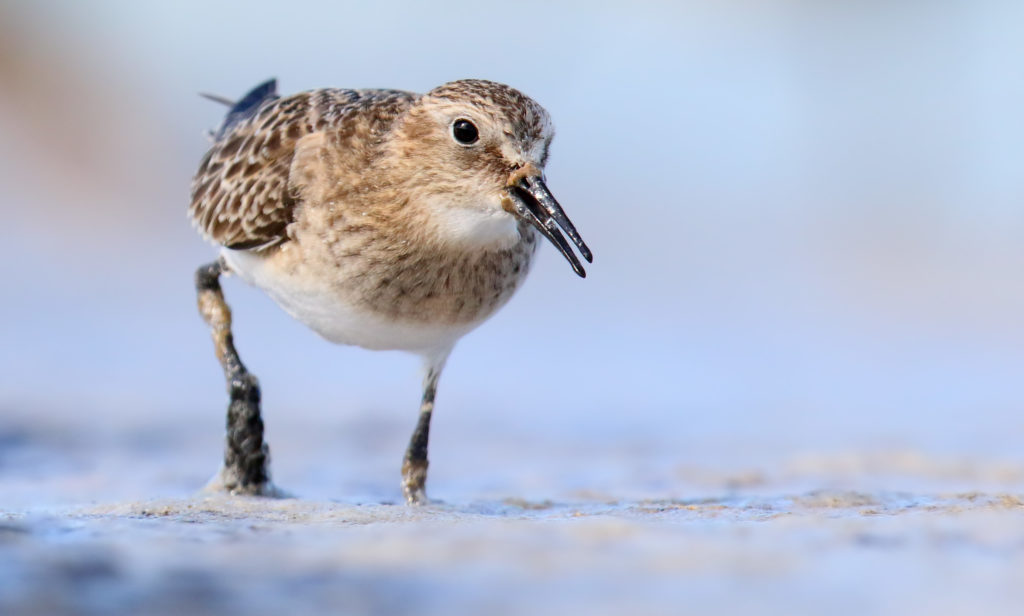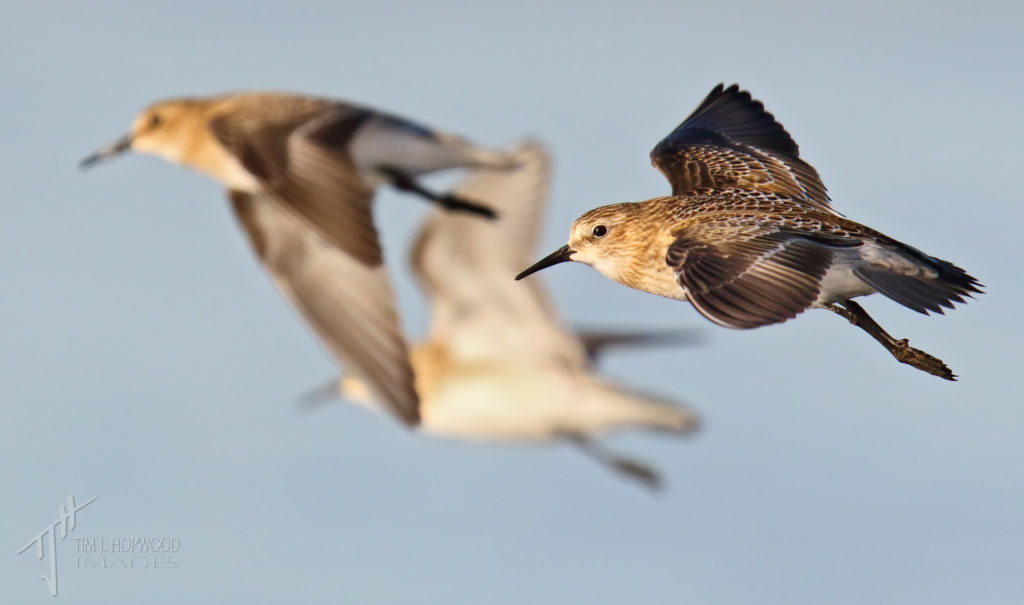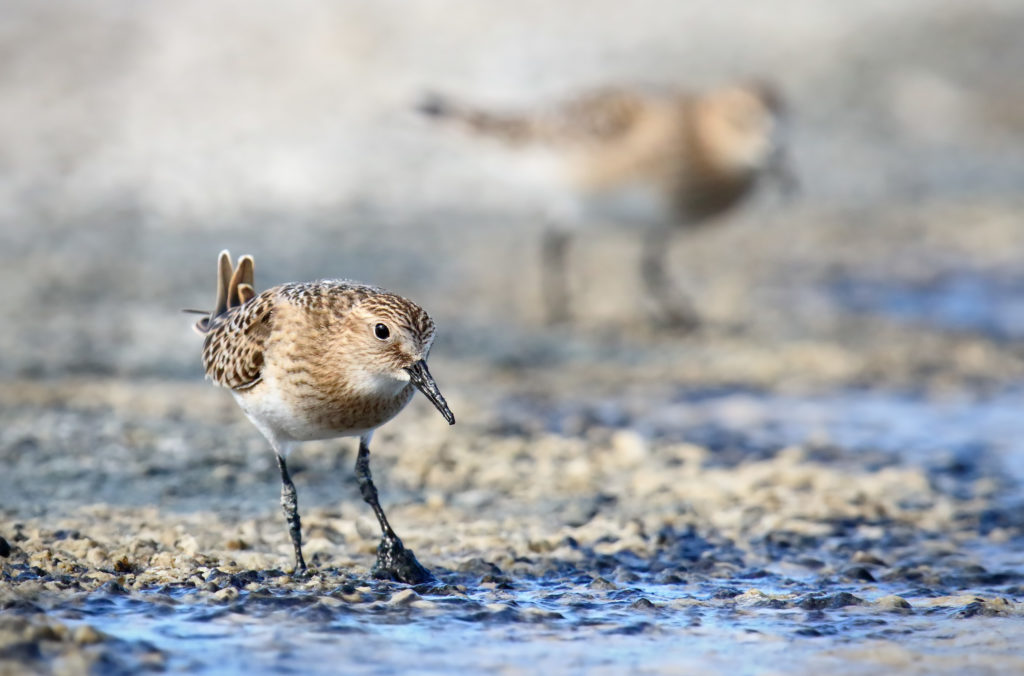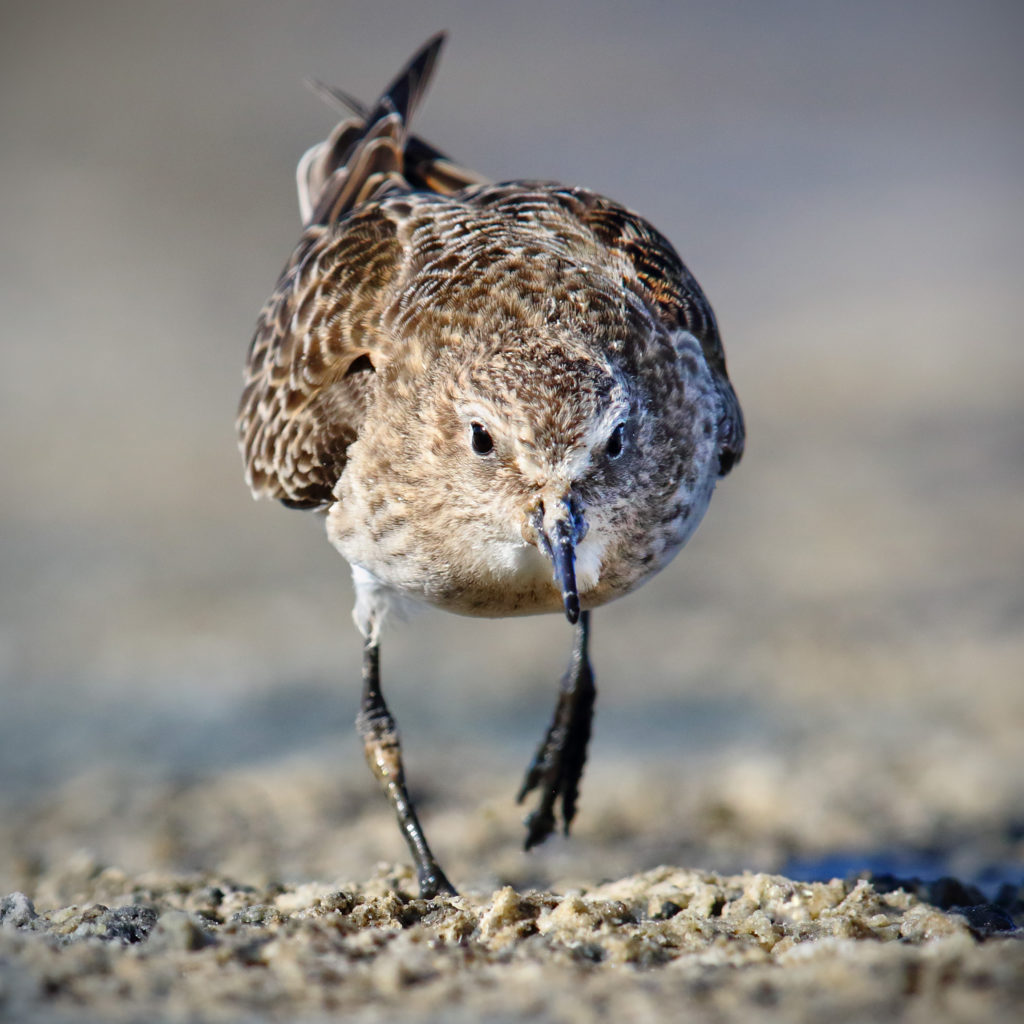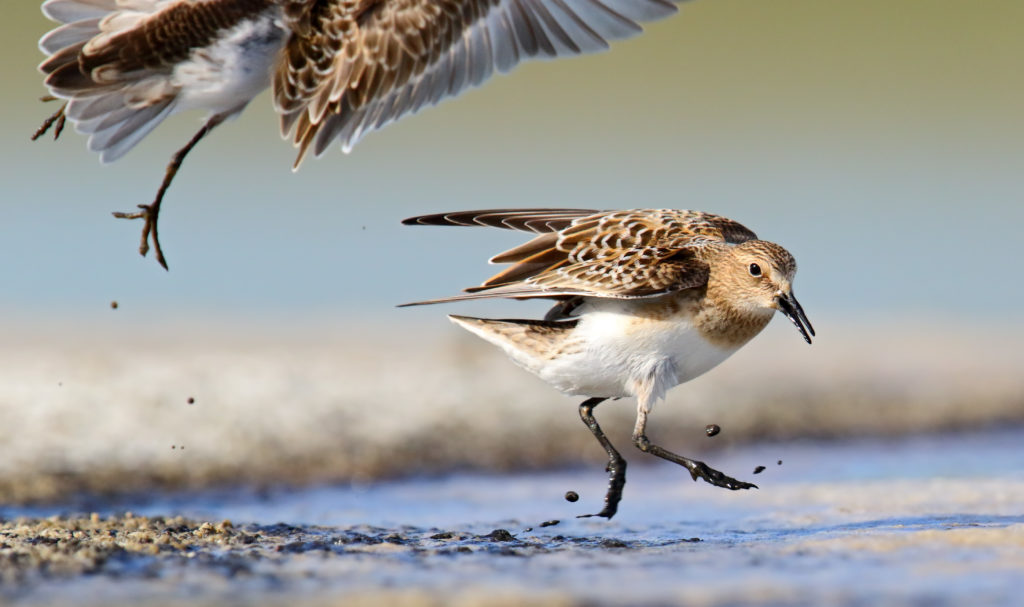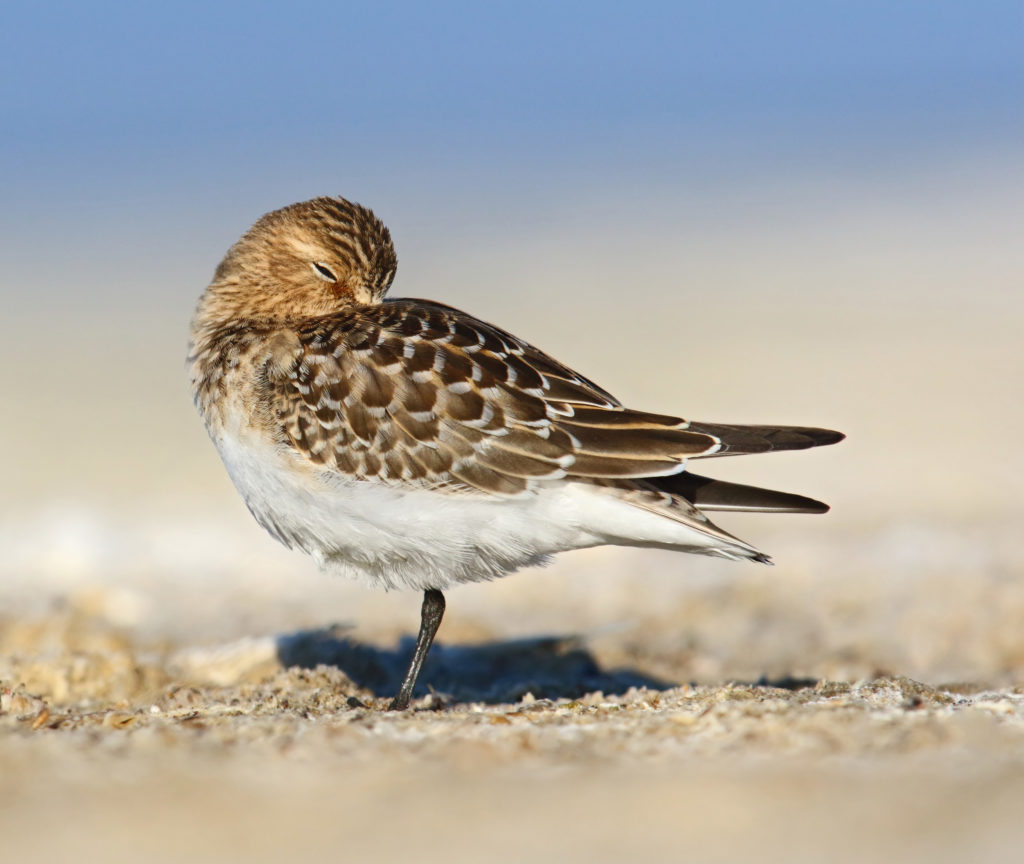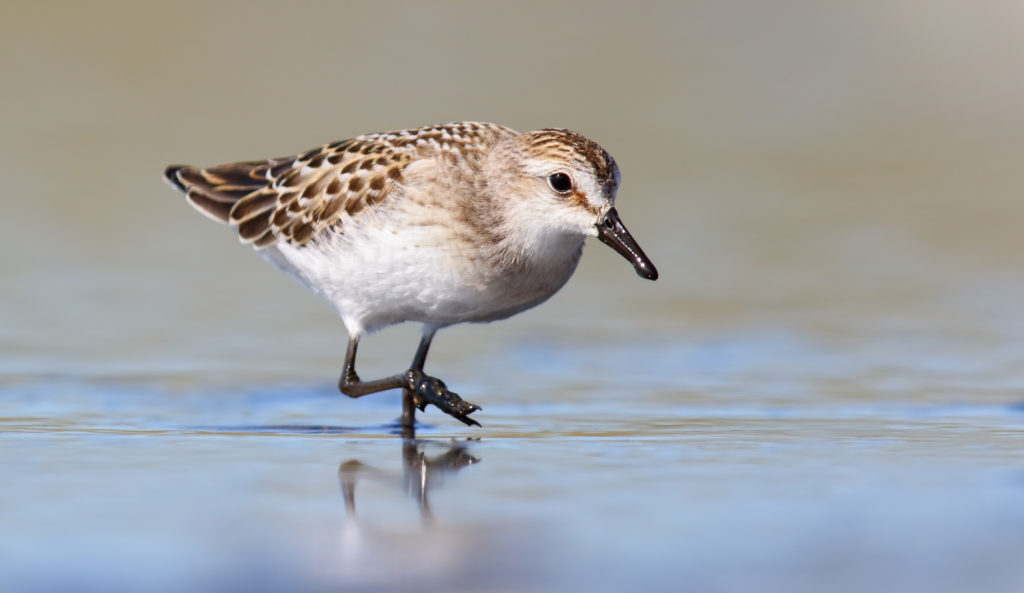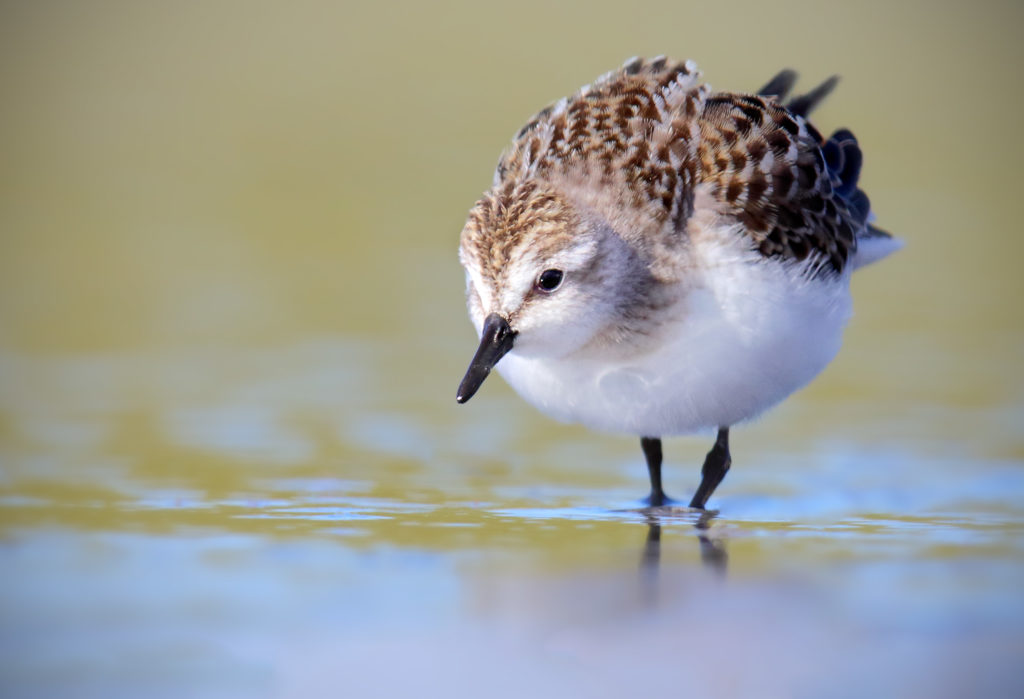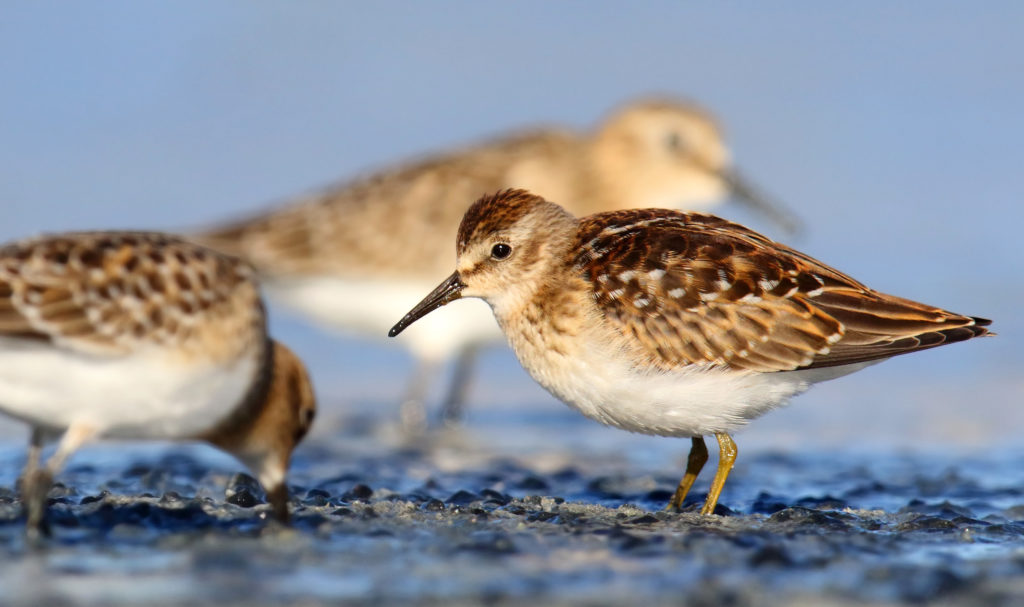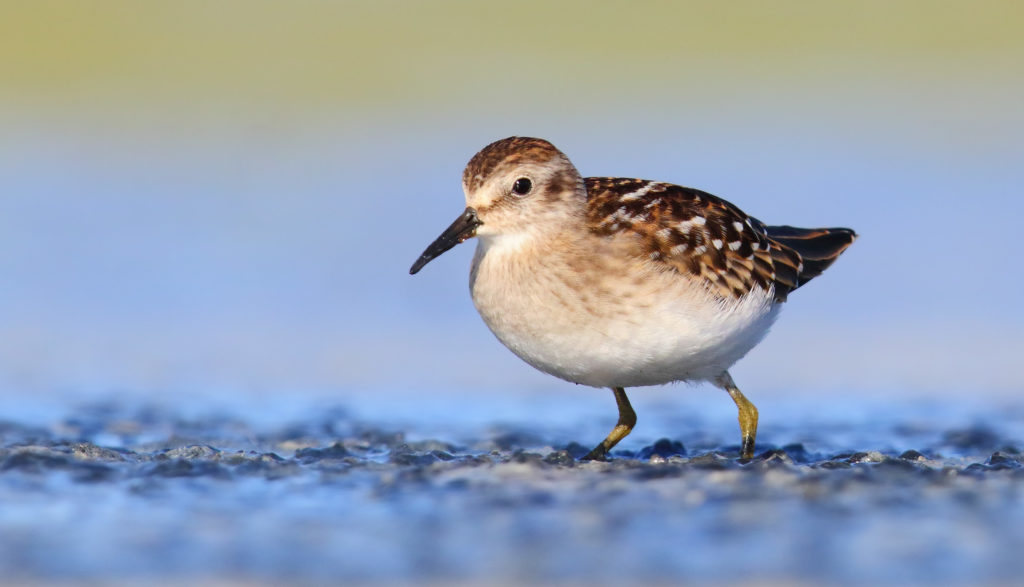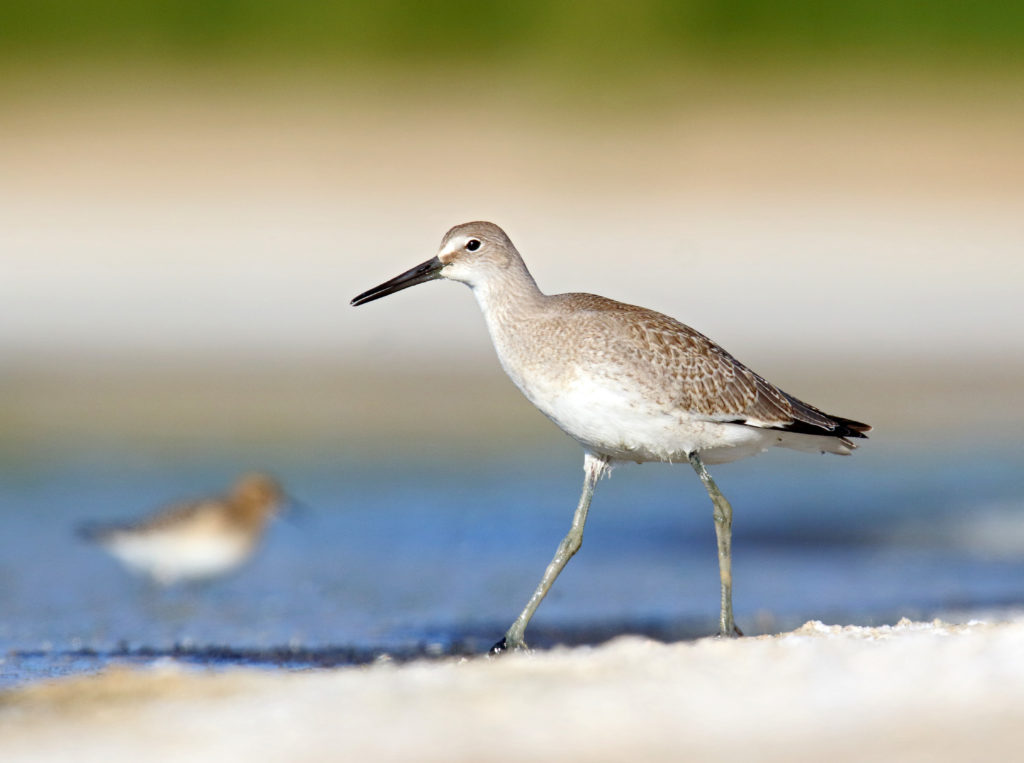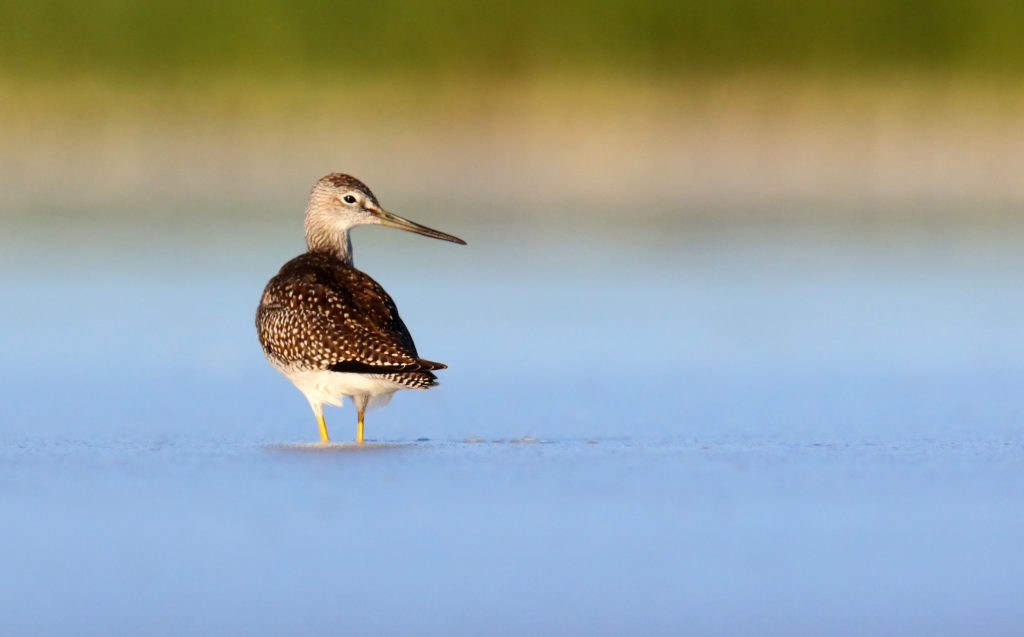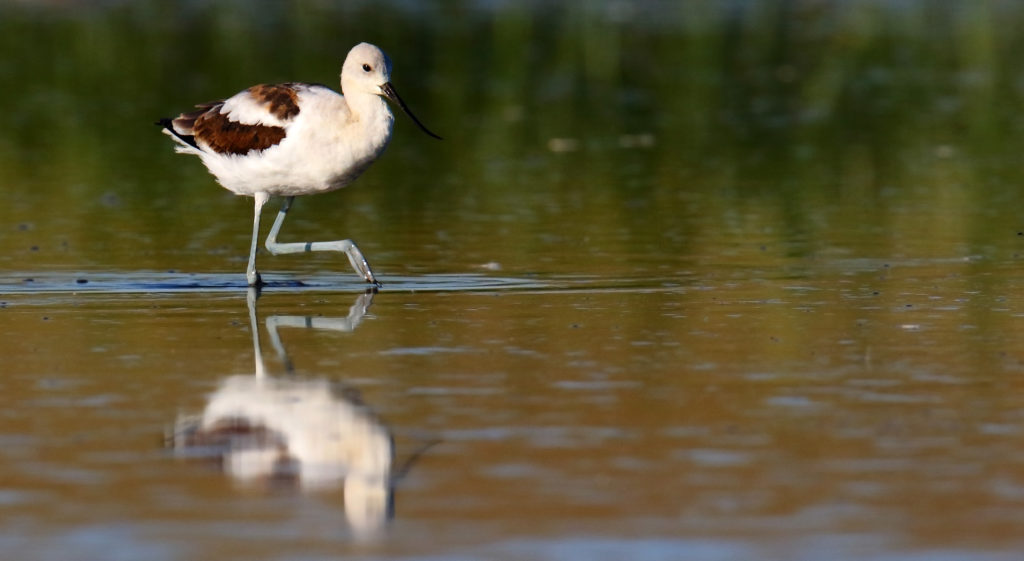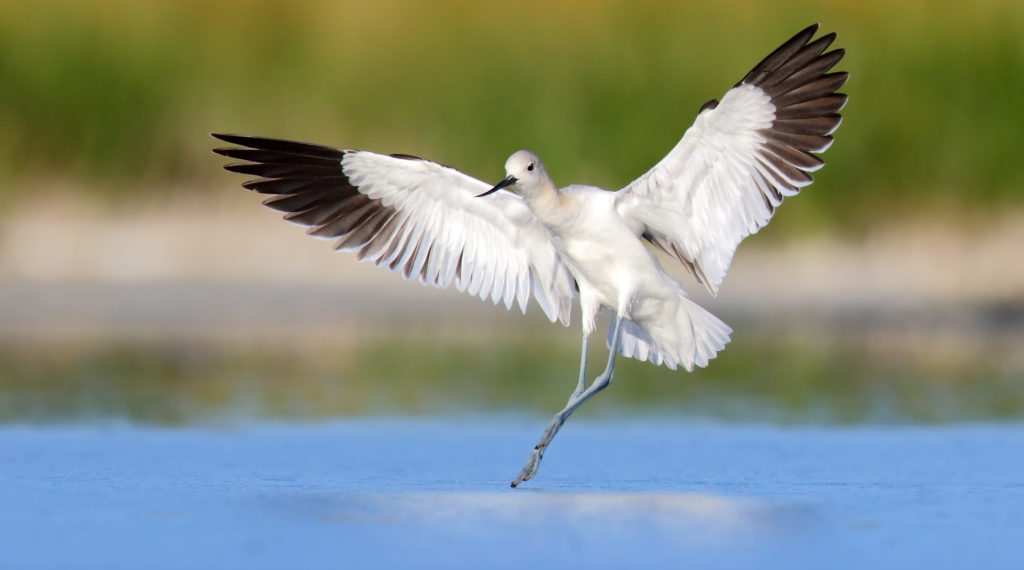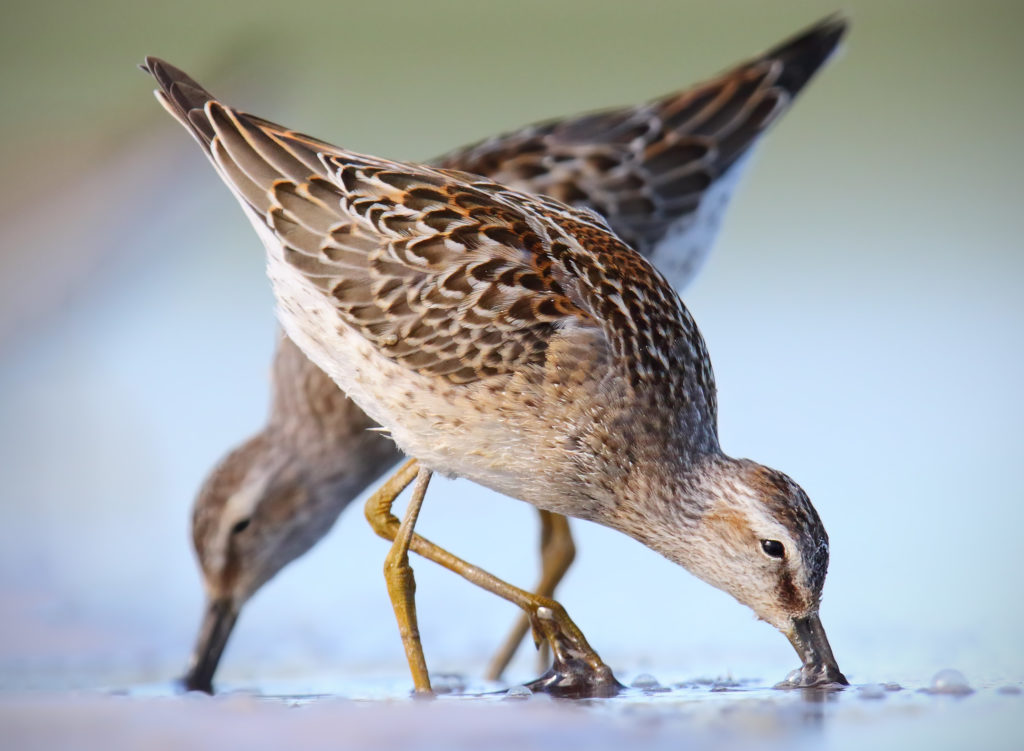This August I had a very enjoyable week of camping with my family out on the prairie lakes and east of Calgary, during which I was able to photograph a number of migrant shorebirds as they passed southward through southern Alberta. Weather-wise, we were pretty lucky with only the one rainy day, and there was also a good variety of birds to see.
As we were camped at Kinbrook Island, about 2 hours east of Calgary and just south of the town of Brooks, one morning I decided to go on a bit of a ‘hail mary’ search for Burrowing Owls as these increasingly rare birds can apparently occasionally be seen in this general area. Well, after 2 hours of fruitless searching I turned around and headed home, somewhat dejected, having not taken a single image. However, my spirits were raised when I spied a flock of white shorebirds flying and wheeling low above a roadside slough.
Upon closer inspection they turned out to be Red-necked Phalaropes in non-breeding plumage:
When I glanced out my car window on the opposite side, there was a much shallower slough with something of beach/mudflat and, lo and behold, a few dozen more shorebirds patrolling the beach. Awesome!
So, grabbing my gear and I headed down to the shoreline and slowly approached the shorebirds. As I got closer to the water the ground beneath my feet became softer and I was soon in the mud, so my decision to wear water-proof gear and bring my rubber boots was a fortuitous one. And along with the mud came the usual somewhat unpleasant odors…but nothing compared to the stink I’ve encountered elsewhere, especially at lakes that are receptacles for treated sewage!
Once I was about 20 meters away from the nearest bird I began to crawl slowly and halted once a few of the more skittish birds took off. The great thing about shorebirds is they usually fly a few loops and then settle back down to feed, often in the same spot they left or nearby. This encounter was no exception and soon most of the birds returned and the longer I stayed the less concerned they were and soon the shorebirds were happily feeding ‘up close and personal’.
The main focus of my attention were a flock of Stilt Sandpipers because I have not seen them on many occasions, so I wanted to make the most of the opportunity (and I’m glad I did for when I returned the following morning every one of the Stilts had gone!):
Baird’s Sandpipers were the most abundant and they were quite active – feeding, chasing each other of ‘their patch’, flying here and there and occasionally having a rest:
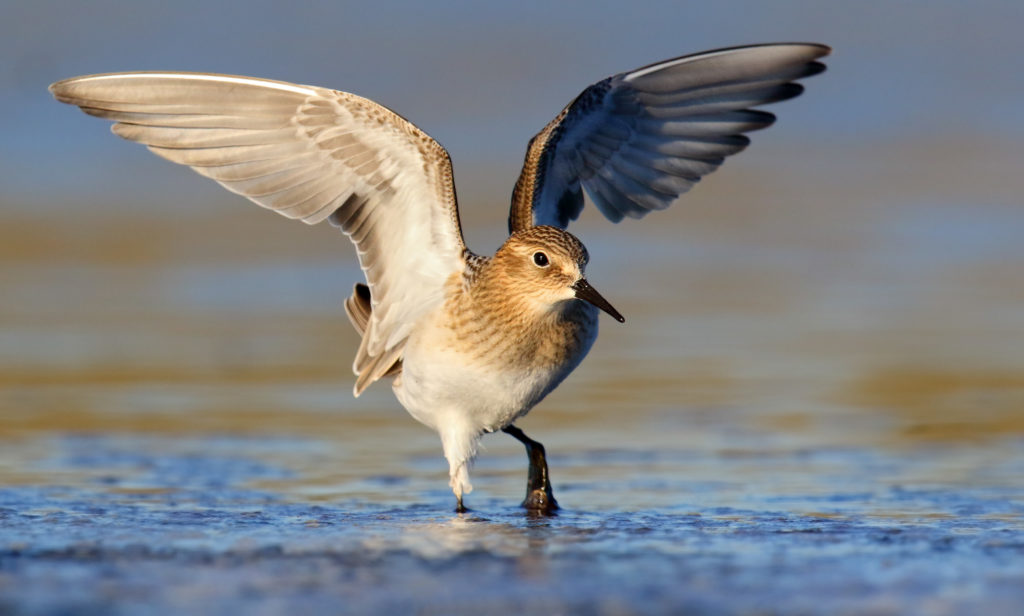
Baird’s Sandpiper – rapidly flapping its wings to extricate itself from the thick mud. Brooks, Alberta
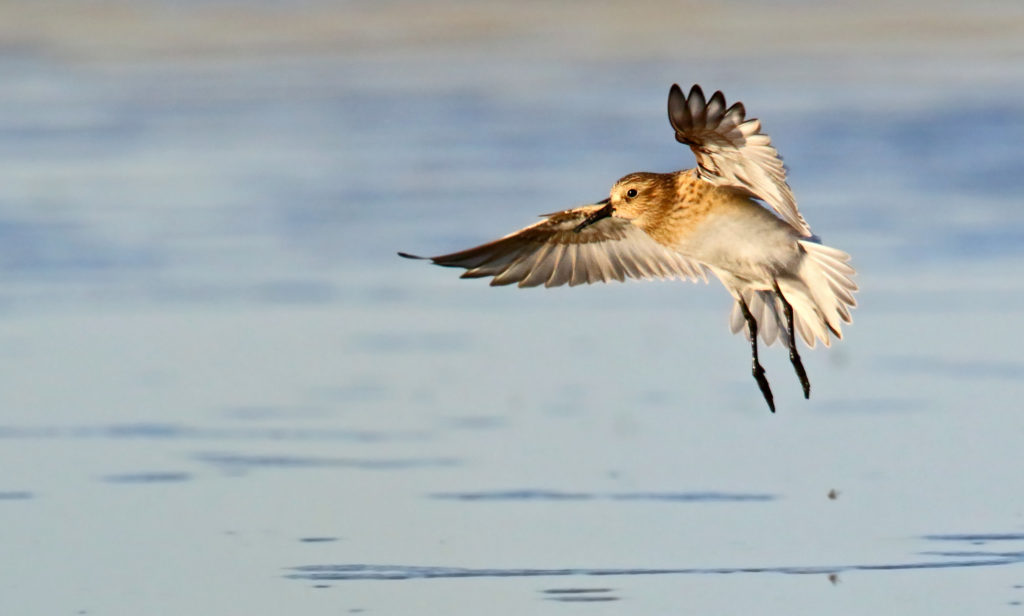
Baird’s Sandpiper – returning to its original feeding spot after I inadvertently spooked them. Brooks, Alberta
A good sprinkling of Semi-palmated Sandpipers also presented themselves:
And last, and indeed least, were a handful of tiny Least Sandpipers that I was able to pick out by virtue of their relatively small size and yellow legs:
Indeed half of the fun of shorebirding is scanning the mixed flocks and ID’ing individual species!
Amongst the other shorebirds present were Willets:
Greater Yellowlegs:
and several pairs of the delicate American Avocets, still very photogenic despite having lost their brick-red breeding plumage:
These images come from two consecutive morning visits, and represent pretty much all my 2016 shorebirding. I look forward to more in 2017!
You can see more of my wildlife photography here: https://www.facebook.com/timjhopwood/



